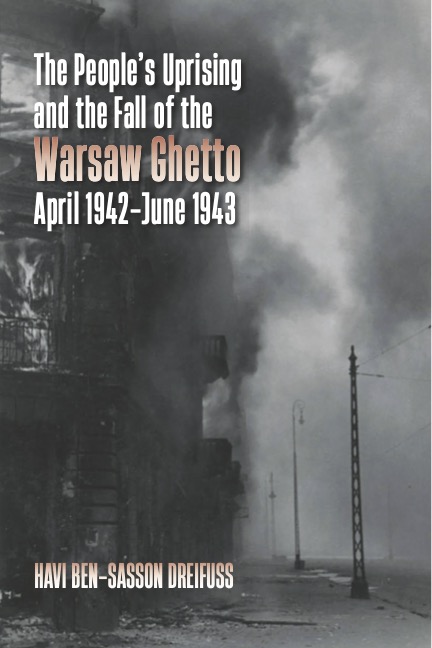Forthcoming
The People’s Uprising and the Fall of the Warsaw Ghetto, April 1942-June 1943
Havi Ben-Sasson Dreifuss

The People’s Uprising and the Fall of the Warsaw Ghetto, April 1942-June 1943 sheds light on the lives, choices, and experiences of the tens of thousands of Jews who were not part of the underground armed resistance but nonetheless played a crucial role in the life of the ghetto and supported the famed Warsaw Ghetto Uprising. This riveting and dramatic account focuses on the final year of the Warsaw ghetto—from the Great Deportation in the summer of 1942 through the suppression of the uprising in mid-1943. Drawing on powerful contemporary testimonies, diaries, and documents—many of them previously unexplored—the book reveals how members of the broader Jewish population struggled to survive, maintain family and community life, and make impossible moral decisions in the face of fear, hunger, and daily violence. Expanding the lens beyond the fighters themselves, it offers a story of devastation, but also of resilience and human dignity.
Published in association with Yad Vashem.
“A brilliantly researched book that draws on recorded statements of the combatants and, for the first time, gives full weight to personal testimonies of Warsaw ghetto inhabitants. A very important contribution to scholarly literature.” - Jan T. Gross, Professor of History Emeritus, Princeton University
"A deeply-researched, clearly-written, and important exploration that brings to light a little-known story of Jewish resistance and bravery." – Judy Batalion, author of The Light of Days
“A meticulously documented examination of the meaning of the Warsaw ghetto uprising, and of the ways in which the very category of Jewish resistance has been constructed.” – Avinoam Patt, Professor of Holocaust Studies, NYU
"This powerful work turns our attention to the Warsaw Ghetto's population as a whole, showing how the uprising sought not just to combat the Nazis with arms but to strike against Nazi ideology as such." - Dan Stone, Professor of Modern History, Royal Holloway, University of London
About the Author
Havi Ben-Sasson Dreifuss is a professor of Jewish History at Tel Aviv University, where she heads the Institute for the History of Polish Jewry and Israel-Poland Relations. She also serves as the director of the Center for Research on the Holocaust in Poland at Yad Vashem. Her research focuses on Jewish life during the Holocaust, with particular attention to Jewish-Polish relations, religious life under Nazi rule, antisemitism, and Jewish responses to persecution and extermination. She is the author of Relations Between Jews and Poles: The Jewish Perspective (Yad Vashem Publications, 2018).